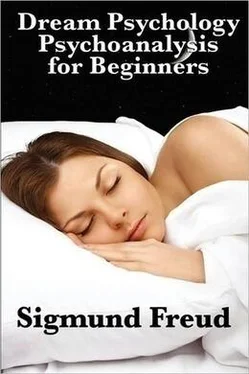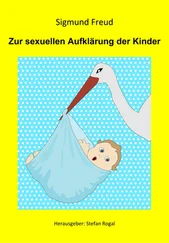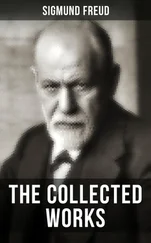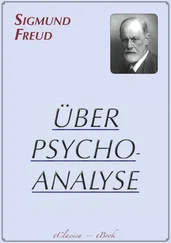VII
The Function of the Dream
Since we know that the foreconscious is suspended during the night by the wish to sleep, we can proceed to an intelligent investigation of the dream process. But let us first sum up the knowledge of this process already gained. We have shown that the waking activity leaves day remnants from which the sum of energy cannot be entirely removed; or the waking activity revives during the day one of the unconscious wishes; or both conditions occur simultaneously; we have already discovered the many variations that may take place. The unconscious wish has already made its way to the day remnants, either during the day or at any rate with the beginning of sleep, and has effected a transference to it. This produces a wish transferred to the recent material, or the suppressed recent wish comes to life again through a reinforcement from the unconscious. This wish now endeavors to make its way to consciousness on the normal path of the mental processes through the foreconscious, to which indeed it belongs through one of its constituent elements. It is confronted, however, by the censor, which is still active, and to the influence of which it now succumbs. It now takes on the distortion for which the way has already been paved by its transference to the recent material. Thus far it is in the way of becoming something resembling an obsession, delusion, or the like, i.e. a thought reinforced by a transference and distorted in expression by the censor. But its further progress is now checked through the dormant state of the foreconscious; this system has apparently protected itself against invasion by diminishing its excitements. The dream process, therefore, takes the regressive course, which has just been opened by the peculiarity of the sleeping state, and thereby follows the attraction exerted on it by the memory groups, which themselves exist in part only as visual energy not yet translated into terms of the later systems. On its way to regression the dream takes on the form of dramatization. The subject of compression will be discussed later. The dream process has now terminated the second part of its repeatedly impeded course. The first part expended itself progressively from the unconscious scenes or phantasies to the foreconscious, while the second part gravitates from the advent of the censor back to the perceptions. But when the dream process becomes a content of perception it has, so to speak, eluded the obstacle set up in the Forec. by the censor and by the sleeping state. It succeeds in drawing attention to itself and in being noticed by consciousness. For consciousness, which means to us a sensory organ for the reception of psychic qualities, may receive stimuli from two sources—first, from the periphery of the entire apparatus, viz. from the perception system, and, secondly, from the pleasure and pain stimuli, which constitute the sole psychic quality produced in the transformation of energy within the apparatus. All other processes in the system, even those in the foreconscious, are devoid of any psychic quality, and are therefore not objects of consciousness inasmuch as they do not furnish pleasure or pain for perception. We shall have to assume that those liberations of pleasure and pain automatically regulate the outlet of the occupation processes. But in order to make possible more delicate functions, it was later found necessary to render the course of the presentations more independent of the manifestations of pain. To accomplish this the Forec. system needed some qualities of its own which could attract consciousness, and most probably received them through the connection of the foreconscious processes with the memory system of the signs of speech, which is not devoid of qualities. Through the qualities of this system, consciousness, which had hitherto been a sensory organ only for the perceptions, now becomes also a sensory organ for a part of our mental processes. Thus we have now, as it were, two sensory surfaces, one directed to perceptions and the other to the foreconscious mental processes.
I must assume that the sensory surface of consciousness devoted to the Forec. is rendered less excitable by sleep than that directed to the P–systems. The giving up of interest for the nocturnal mental processes is indeed purposeful. Nothing is to disturb the mind; the Forec. wants to sleep. But once the dream becomes a perception, it is then capable of exciting consciousness through the qualities thus gained. The sensory stimulus accomplishes what it was really destined for, namely, it directs a part of the energy at the disposal of the Forec. in the form of attention upon the stimulant. We must, therefore, admit that the dream invariably awakens us, that is, it puts into activity a part of the dormant force of the Forec. This force imparts to the dream that influence which we have designated as secondary elaboration for the sake of connection and comprehensibility. This means that the dream is treated by it like any other content of perception; it is subjected to the same ideas of expectation, as far at least as the material admits. As far as the direction is concerned in this third part of the dream, it may be said that here again the movement is progressive.
To avoid misunderstanding, it will not be amiss to say a few words about the temporal peculiarities of these dream processes. In a very interesting discussion, apparently suggested by Maury's puzzling guillotine dream, Goblet tries to demonstrate that the dream requires no other time than the transition period between sleeping and awakening. The awakening requires time, as the dream takes place during that period. One is inclined to believe that the final picture of the dream is so strong that it forces the dreamer to awaken; but, as a matter of fact, this picture is strong only because the dreamer is already very near awakening when it appears. "Un rêve c'est un réveil qui commence."
It has already been emphasized by Dugas that Goblet was forced to repudiate many facts in order to generalize his theory. There are, moreover, dreams from which we do not awaken, e.g. , some dreams in which we dream that we dream. From our knowledge of the dream–work, we can by no means admit that it extends only over the period of awakening. On the contrary, we must consider it probable that the first part of the dream–work begins during the day when we are still under the domination of the foreconscious. The second phase of the dream–work, viz. the modification through the censor, the attraction by the unconscious scenes, and the penetration to perception must continue throughout the night. And we are probably always right when we assert that we feel as though we had been dreaming the whole night, although we cannot say what. I do not, however, think it necessary to assume that, up to the time of becoming conscious, the dream processes really follow the temporal sequence which we have described, viz. that there is first the transferred dream–wish, then the distortion of the censor, and consequently the change of direction to regression, and so on. We were forced to form such a succession for the sake of description ; in reality, however, it is much rather a matter of simultaneously trying this path and that, and of emotions fluctuating to and fro, until finally, owing to the most expedient distribution, one particular grouping is secured which remains. From certain personal experiences, I am myself inclined to believe that the dream–work often requires more than one day and one night to produce its result; if this be true, the extraordinary art manifested in the construction of the dream loses all its marvels. In my opinion, even the regard for comprehensibility as an occurrence of perception may take effect before the dream attracts consciousness to itself. To be sure, from now on the process is accelerated, as the dream is henceforth subjected to the same treatment as any other perception. It is like fireworks, which require hours of preparation and only a moment for ignition.
Читать дальше












